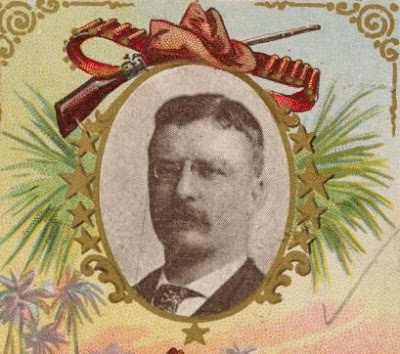Peter Orszag had an article last week at Bloomberg arguing that political partisanship in America has increased dramatically in recent years because Americans have self-segregated their housing according to political
 leanings. Once in like-minded groups, he suggests, they tend to reinforce each other and drift toward extremes as individuals try to outdo each other in enthusiasm for their political affiliations.
leanings. Once in like-minded groups, he suggests, they tend to reinforce each other and drift toward extremes as individuals try to outdo each other in enthusiasm for their political affiliations.This is an interesting theory. It suggests our political inclinations are beyond our control and that society has spiraled into extremism for reasons we cannot stop.
It would certainly be quite interesting to Americans of the 1840s and 1850s, whose partisanship was so extreme congressmen took guns to the House of Representatives to protect themselves, settlers in Kansas and Missouri murdered each other in their beds, and millions of men killed off several hundred thousand of each other before deciding to call it quits. Who knew that when they moved West, setting up shelters wherever they found good land, that antebellum Americans were unconsciously segregating into political neighborhoods?
There is a much more obvious and more plausible explanation than political segregation for the increases in political partisanship that have occurred with pretty cyclical regularity in
 American history. It is an explanation that suggests that partisanship and compromise are both deeply imbedded in the American political tradition.
American history. It is an explanation that suggests that partisanship and compromise are both deeply imbedded in the American political tradition.Rising politicians need to be able to attract attention. To that end, they need to distinguish themselves from the successful politicians who hold power. When those senior politicians have emphasized compromise, aspiring politicians have attacked them and advocated more extreme positions. Extremism begets extremism until the system becomes utterly dysfunctional. At that point, aspiring younger politicians can attract attention by advocating not extremism, but compromise.
This cycle of compromise to partisanship to extremism to compromise has turned over again and again in American history.
To see how this works, let’s look at the first generation of professional politicians in America: the Jacksonians of the 1830s. The men who wanted to put Andrew Jackson in the White House needed a way to garner support for a man who was widely regarded as volatile and a rather dim bulb. How could they elevate him when men like Henry Clay, the Great Compromiser, controlled the political scene? By viciously attacking Clay and men of his ilk with
 unfounded accusations, decrying compromise as weakness, and building a constituency that despised the very art of compromise Clay performed so well.
unfounded accusations, decrying compromise as weakness, and building a constituency that despised the very art of compromise Clay performed so well.How then could the next generation of politicians opposed to Jackson’s Democratic Party build its own constituency? By attacking the Democrats, of course.
As political leaders squared off, the newspapers that supported them echoed their rhetoric. There, and not in unconsciously politically segregated communities, individual editors turned up the heat of extremism. Each tried to outdo the competition to draw readership and the advertising dollars readers attracted. Partisanship rose as voters learned to value conflict rather than compromise.
As members of each party more and more often characterized their opponents as corrupt, dangerous, and evil, compromise became increasingly unthinkable.
We know how that turned out.
But the need for politicians to distinguish themselves from their predecessors can serve compromise as well as conflict. When partisanship has become more important than actual governing the government ceases to function in any sort of a competent way. Astute younger politicians then can build careers by promising to compromise with opponents to create solutions that make the government work again. Theodore Roosevelt, for example, recognized voters were frustrated by the extremism of the late nineteenth century that had paralyzed government just when the nation was desperate for solutions to the crises of industrialism. Roosevelt created an image of himself as bipartisan, willing to side with Democrats even against members of his own party to do what was good for the country (a position that infuriated
 old-fashioned Republicans and Democrats both). Roosevelt was not alone, though. His construction of a politics of compromise was part of the reaction of his generation to the partisanship of the previous generation. That premium on compromise produced the bipartisan Progressive Era.
old-fashioned Republicans and Democrats both). Roosevelt was not alone, though. His construction of a politics of compromise was part of the reaction of his generation to the partisanship of the previous generation. That premium on compromise produced the bipartisan Progressive Era.Which, in turn, was followed by the growing extremism of the 1920s . . . and so on.
These political swings have been part of American society since at least the 1830s. They are not about living quarters. While housing patterns may reflect the current political values of the national culture, Americans are not first self-segregating politically and then self-integrating politically every few generations. What they are doing, though, is listening to their political leaders, reading the news, watching TV, and now, using the internet. What they hear drives their attitudes toward politics.
Far from being a reflection of living patterns created without our conscious control, partisanship and compromise are both deliberate decisions made by political leaders.








